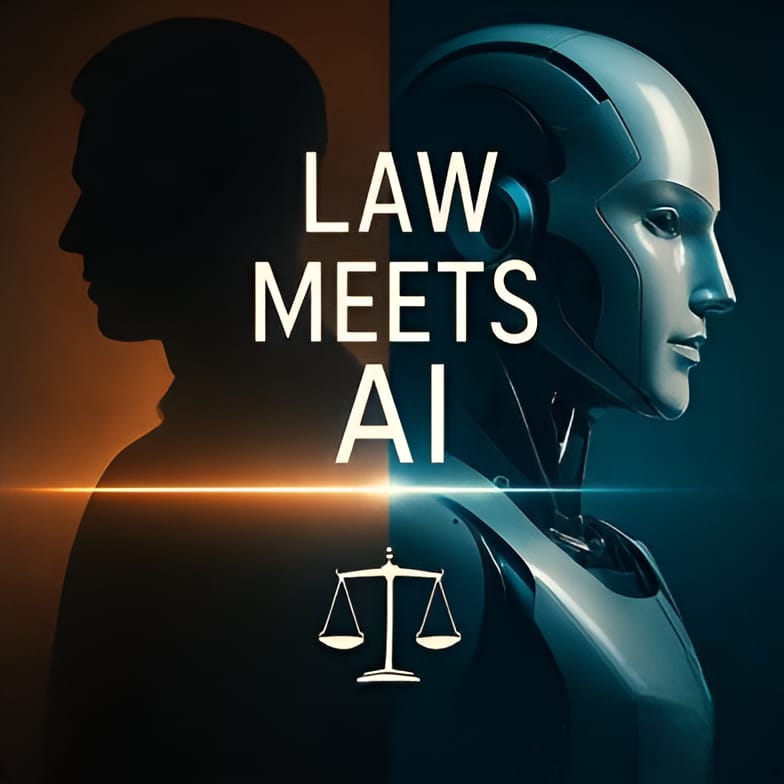- The CyberLens Newsletter
- Posts
- Building Accountability and Trust through Clear AI Governance
Building Accountability and Trust through Clear AI Governance
The Transparent Intelligence Imperative

Your boss will think you’re a genius
If you’re optimizing for growth, you need ecomm tactics that actually work. Not mushy strategies.
Go-to-Millions is the ecommerce growth newsletter from Ari Murray, packed with tactical insights, smart creative, and marketing that drives revenue.
Every issue is built for operators: clear, punchy, and grounded in what’s working, from product strategy to paid media to conversion lifts.
Subscribe for free and get your next growth unlock delivered weekly.

🔐Interesting Tech Fact:
In 1977, the U.S. Department of Defense introduced the Trusted Computer System Evaluation Criteria (TCSEC)—better known as the Orange Book—which quietly became the foundation for modern information security policies. Long before cybersecurity was a global buzzword, this manual defined strict rules for how computers should handle classified data, laying out early concepts of access control, audit trails, and system accountability. Its influence still echoes through ISO 27001 standards and enterprise governance models today, reminding us that digital trust was once built page by page, not line by line of code.
Introduction
In an age when artificial intelligence quietly shapes what we see, hear, and decide, transparency is no longer a luxury—it’s a lifeline. The conversation about AI has shifted from what machines can do to how they do it, and who gets to know the answer. Behind every algorithm lies an intricate network of data, policy, and human intent. Yet for all its power, AI remains shrouded in complexity that few can interpret and even fewer can regulate effectively. This is where the call for transparent governance takes center stage, redefining not only how we design intelligent systems but how we safeguard human trust in them.
The demand for transparency in AI policies stems from a simple truth: unseen power breeds unease. People want to know why an AI system rejected their loan, flagged their résumé, or curated their newsfeed. The opacity of algorithmic decision-making erodes confidence in institutions—corporate, governmental, and academic alike. Transparency, on the other hand, invites accountability. It’s a structural principle that ensures AI is not only powerful but also understandable, traceable, and fair. Without it, innovation becomes a guessing game, and public faith—already fragile in the digital era—collapses under the weight of uncertainty.

The Architecture of Transparent AI
At the core of AI transparency lies an architectural challenge: how do you make a machine’s logic visible without compromising its complexity or security? Transparency begins long before an AI model is deployed. It starts with data collection—where the data comes from, how it’s cleaned, and whether it reflects the diversity of human experiences. From there, the focus shifts to explainability, documentation, and auditability. These elements form the foundation of governance frameworks that define who is accountable when AI makes mistakes or behaves unpredictably.
In technical terms, the architecture of transparent AI includes layered documentation—data sheets for datasets, model cards for algorithms, and system reports that outline performance limitations and biases. These specifications are not bureaucratic burdens; they are blueprints for responsible innovation. They help engineers trace errors, policymakers draft informed regulations, and citizens understand how decisions are shaped. In a sense, transparency acts as a map through the digital maze, guiding both developers and regulators toward accountability.
When governments and corporations commit to this architectural clarity, they are effectively building bridges between technology and society. The European Union’s AI Act, for instance, sets global precedents by requiring clear documentation for high-risk AI systems. In the United States, federal agencies are drafting similar frameworks emphasizing interpretability and human oversight. Each step toward transparency reinforces a central idea: AI must serve people, not perplex them.
Why Transparent Governance Matters
Transparent governance is not just a moral stance—it’s a structural necessity in the new age of machine intelligence. When algorithms influence credit approvals, medical treatments, and even judicial recommendations, the stakes for fairness and clarity become life-defining. Without transparent frameworks, the inner logic of AI systems becomes a mystery, and mystery breeds mistrust.
The significance of transparency lies in its ability to transform hidden processes into shared understanding. It ensures that AI systems are not only efficient but legible. When organizations reveal how their algorithms make choices, they affirm that accountability does not end at the line of code. This visibility allows for independent verification, ethical audits, and public scrutiny—safeguards that reinforce both technological reliability and moral integrity.
Transparency also stabilizes markets and strengthens democracies. In the public sector, it curbs the misuse of predictive technologies in policing, surveillance, or public benefits distribution. In business, it prevents AI-driven manipulation in advertising, lending, and hiring. When clear governance is embedded into policy, it acts as a moral circuit breaker—stopping systems before they amplify inequity or erode public confidence.
Furthermore, transparent governance encourages collective innovation. When algorithms are documented and their limitations openly discussed, industries can share best practices and accelerate progress without sacrificing ethics. It nurtures collaboration among competitors who understand that responsible development benefits the entire ecosystem.
The greatest misconception about transparency is that it slows innovation. In reality, it accelerates it by reducing uncertainty. Organizations with clear governance policies can move faster because they know where the ethical boundaries lie. Employees are empowered to make bold decisions within a structured framework, regulators operate with clearer expectations, and consumers reward brands that choose openness over obscurity.
In essence, transparent governance matters because it humanizes intelligence. It reminds every stakeholder that AI is not a ghost in the machine but a reflection of the human values that shape it.

The Emerging Rules of the Algorithmic Era
Global efforts to define AI governance are accelerating, and the frameworks being established today will dictate how intelligence is integrated into civilization. Though approaches vary by region, they share several core tenets: fairness, accountability, explainability, and human oversight. These principles translate into enforceable policies that demand organizations document their algorithms, disclose their training data, and allow independent audits.
In practice, transparent AI governance means embedding clarity into every stage of an AI lifecycle—from concept to deployment. It also means recognizing that policies must evolve as technology advances. Static rules cannot govern dynamic systems. Thus, adaptive governance models are gaining traction, emphasizing continuous monitoring and public participation. Citizens, too, have a stake in understanding and questioning the systems that increasingly shape their lives.
Key components of transparent AI governance include:
Clear documentation of data provenance and algorithmic decision logic.
Independent auditing mechanisms to assess compliance and ethical integrity.
Mandatory reporting of AI limitations, risks, and performance benchmarks.
Training programs that educate employees about responsible AI practices.
Public transparency portals that allow users to view how AI impacts them.
Each of these elements transforms governance from a closed-door policy to an open, participatory process. By turning AI into a readable system rather than a mysterious force, societies create a digital environment where accountability and progress coexist.
Educating the Human Side of AI
Transparency cannot thrive without human comprehension. Employees, from developers to executives, must understand not only how AI works but how governance frameworks apply to their daily decisions. This cultural shift is essential to prevent ethical lapses and operational blind spots. When employees grasp the importance of explainability, they’re less likely to treat AI as a black box and more likely to identify potential risks early.
Organizations should invest in structured learning programs that merge technical knowledge with ethical reasoning. These can take the form of AI ethics boot camps, compliance simulations, or ongoing workshops tied to regulatory updates. Education should not be limited to technologists—marketing teams, HR departments, and senior leadership must all understand the principles guiding AI deployment. Transparent governance only succeeds when everyone can articulate why it matters.
For employees, these frameworks bring empowerment. They offer clarity on boundaries, accountability, and purpose. For business owners and corporations, they reduce uncertainty in compliance, improve brand trust, and mitigate legal exposure. In essence, transparent governance aligns ethical conduct with competitive advantage—a rare synergy in modern capitalism.

The Changing Landscape of Power and Accountability
Transparency in AI policies is fundamentally reshaping how power is distributed. In the opaque model, authority resides with those who understand the code—data scientists, engineers, and executives. But when governance demands visibility, power decentralizes. Stakeholders across disciplines gain access to information once confined to technical silos. Regulators, journalists, and even consumers become participants in oversight rather than passive observers.
This democratization of understanding changes everything. Corporations can no longer hide behind “proprietary algorithms” when those algorithms dictate access to housing, credit, or employment. Governments can no longer deploy surveillance tools without disclosing their data ethics standards. The expectation of transparency transforms secrecy from a privilege into a liability.
Still, transparency is not a cure-all. Too much disclosure can expose trade secrets or create information overload that confuses rather than clarifies. The challenge, therefore, lies in balance—revealing enough to build trust without compromising security or innovation. Successful governance frameworks will be those that find equilibrium between openness and operational integrity.
The Cost of Darkness
The absence of transparency carries a hidden tax—one paid in public mistrust, ethical lapses, and reputational collapse. When the logic of AI remains veiled, it allows errors and biases to metastasize silently. What begins as a design flaw can evolve into a societal fault line. History is filled with examples of powerful systems that fell not because they failed technically, but because they failed morally—because they concealed more than they revealed.
In opaque environments, accountability evaporates. When no one knows who made the decision—or how—it becomes impossible to assign responsibility. This ambiguity invites corruption and exploitation. Governments can use AI surveillance systems to track citizens without oversight. Corporations can harvest personal data under vague “optimization” claims. Once trust is lost, no algorithm can restore it.
The cost of darkness also manifests economically. Businesses that conceal how their AI operates may gain a short-term advantage, but they invite long-term instability. Consumers today are more informed and ethically aware; they demand transparency as part of a brand’s value. Regulatory noncompliance can result in multi-million-dollar fines, class-action lawsuits, and irreversible damage to reputation. When trust collapses, so does market confidence.
For employees, the absence of transparency fosters confusion and fear. When staff members don’t understand how or why automated systems make internal decisions—such as performance ratings, promotions, or layoffs—it corrodes workplace morale. It replaces empowerment with suspicion and reduces collaboration to compliance. In contrast, a culture of openness allows workers to see AI as a tool of partnership, not control.
The consequences ripple outward. A lack of transparent governance doesn’t just endanger organizations—it undermines society’s relationship with technology itself. People begin to view AI not as an extension of human capability but as an unaccountable force that manipulates lives from behind a digital curtain. Once that perception takes hold, progress halts, and regulation becomes reactionary rather than visionary.
The cost of darkness, then, is not measured in dollars or lines of code but in erosion of trust, the most valuable currency of all. Every hidden dataset, every unexplained algorithmic choice, chips away at the public’s faith in systems meant to improve their lives. The way forward is not to make machines less powerful—but to make their power visible, understandable, and answerable to the people they serve.
The Future Written in Light
Transparency is not merely about compliance—it is about integrity. The systems of tomorrow will not earn trust through sophistication alone but through honesty. The architecture of transparent AI governance symbolizes a broader cultural transformation: a movement from control to collaboration, from obscurity to clarity. It’s about restoring the human element in a machine-driven world.
To succeed, organizations must view transparency as an evolving discipline rather than a final checklist. It demands sustained investment in documentation, education, and oversight. It also requires courage—the courage to admit when algorithms err, to explain decisions even when inconvenient, and to place ethical accountability above speed or profit.

Final Thought
The future of AI governance will not be written in code alone—it will be written in clarity. Transparency is the new measure of intelligence, not because it reveals how machines think, but because it reveals how humans choose to guide them. It invites society to look inward, questioning not just what we build but why. The light of transparency is disruptive—it exposes, challenges, and redefines power—but it also illuminates the path toward a more trustworthy technological future.
When the curtain lifts on the algorithmic stage, what remains is not fear of the unknown but recognition of shared responsibility. The question is no longer whether we can make AI smarter, but whether we can make ourselves wise enough to manage it openly. In that answer lies the next great measure of human progress.

Subscribe to CyberLens
Cybersecurity isn’t just about firewalls and patches anymore — it’s about understanding the invisible attack surfaces hiding inside the tools we trust.
CyberLens brings you deep-dive analysis on cutting-edge cyber threats like model inversion, AI poisoning, and post-quantum vulnerabilities — written for professionals who can’t afford to be a step behind.
📩 Subscribe to The CyberLens Newsletter today and Stay Ahead of the Attacks you can’t yet see.





